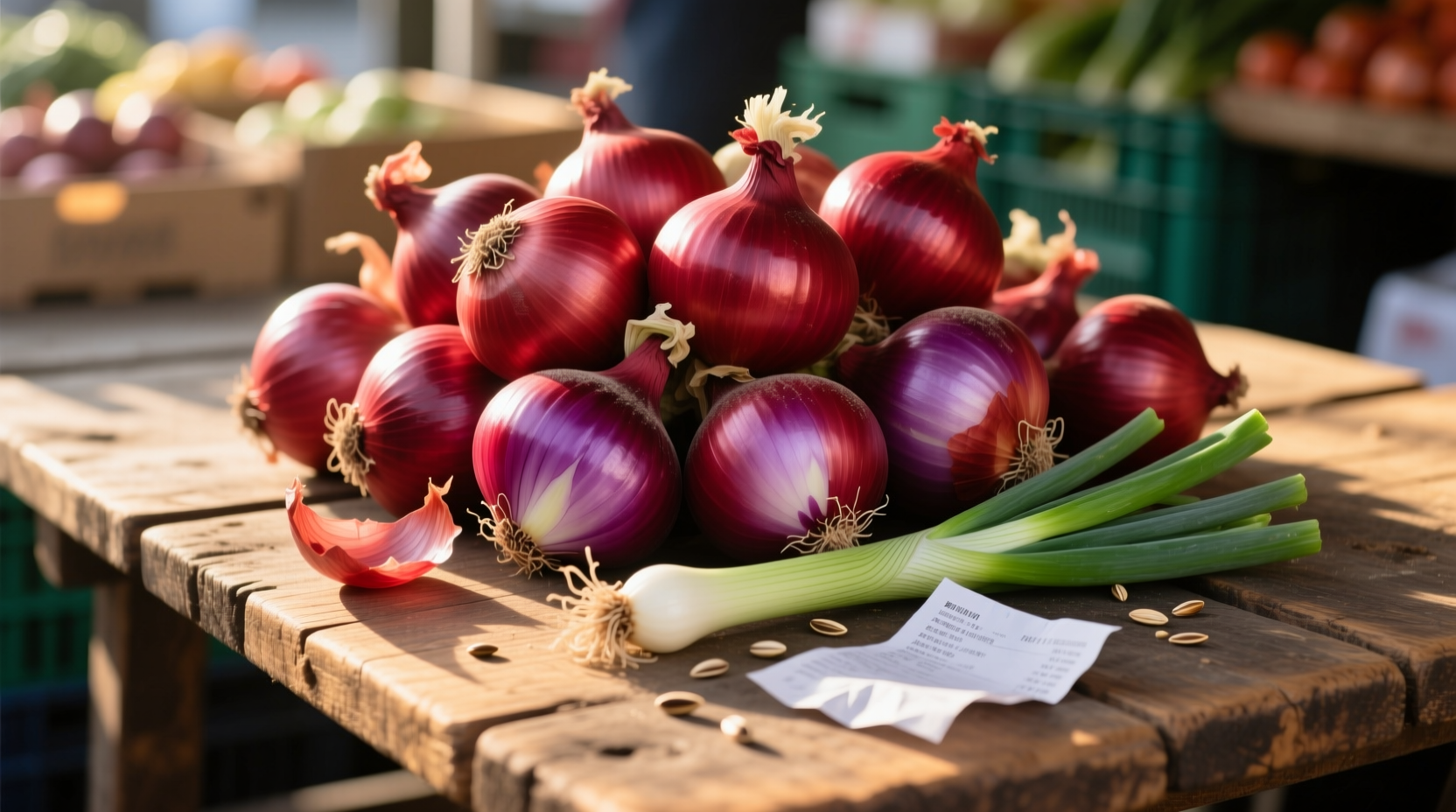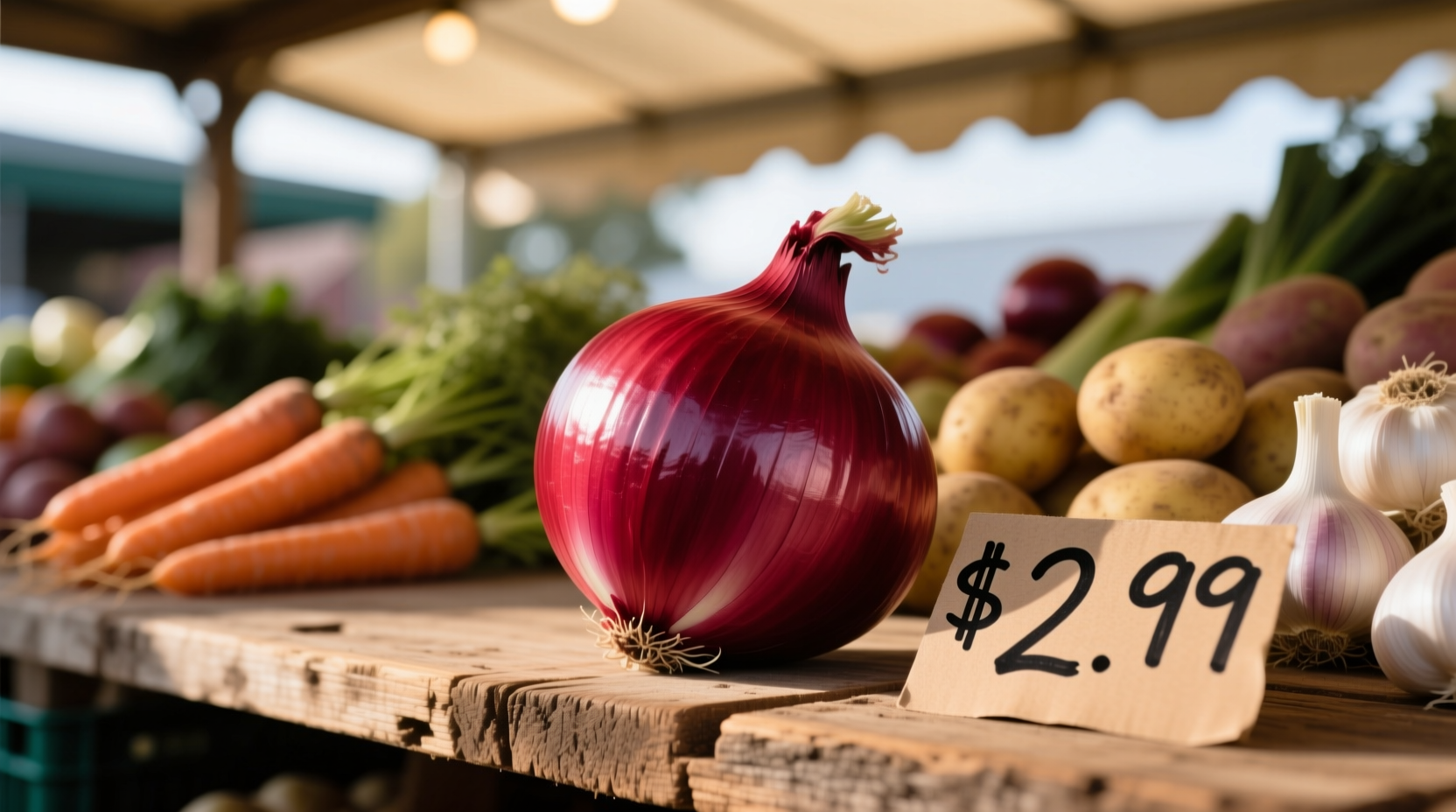Understanding red onion pricing helps home cooks and professional chefs make informed purchasing decisions while maximizing flavor and budget. This comprehensive guide delivers the latest market data, explains the factors driving price fluctuations, and provides practical strategies for getting the best value without compromising quality.
Current Red Onion Market Snapshot
Red onion prices fluctuate daily based on supply chain dynamics, seasonal availability, and regional demand. As of this month, here's what consumers and businesses can expect to pay:
| Purchase Type | Price Range | Best Value Timing |
|---|---|---|
| Grocery Store (per pound) | $0.50 - $2.50 | July-October (harvest season) |
| Wholesale (per 50lb bag) | $15 - $60 | August-September (peak harvest) |
| Farmer's Market (per pound) | $0.75 - $1.80 | June-November (local growing season) |
| Organic (per pound) | $1.50 - $3.50 | Year-round (premium pricing) |
This pricing data comes from the USDA Agricultural Marketing Service, which tracks daily wholesale and retail produce prices across major markets. The most significant price variations occur between harvest season and off-season periods.
Why Red Onion Prices Change Throughout the Year
Several interconnected factors influence red onion pricing, creating predictable seasonal patterns that savvy shoppers can leverage:
Seasonal Harvest Cycles Drive Major Price Shifts
Red onions follow a clear seasonal pricing pattern that directly correlates with harvest times. California and Washington produce the majority of US red onions, with harvest typically running from July through October. During this peak season, prices drop significantly as supply increases.
Understanding this timeline helps explain why you'll pay premium prices in winter and spring when onions must be stored or imported:
- January-April: Highest prices ($1.50-$2.50/lb) as stored onions deplete
- May-June: Moderate prices ($1.00-$1.75/lb) as early crops arrive
- July-October: Lowest prices ($0.50-$1.25/lb) during peak harvest
- November-December: Rising prices ($0.90-$1.80/lb) as storage costs increase
Weather Impacts Create Short-Term Price Spikes
Recent data from the USDA National Agricultural Statistics Service shows that extreme weather events can cause temporary price surges of 20-40%. For example, the 2023 California heatwave reduced yields by 15%, causing retail prices to jump from $0.89 to $1.49 per pound within six weeks.
When drought or excessive rain affects major growing regions like California, Washington, or Oregon, prices respond quickly due to:
- Reduced crop yields
- Increased production costs
- Shorter shelf life of harvested onions
Regional Price Differences You Should Know
Where you live significantly impacts what you'll pay for red onions. According to the latest Bureau of Labor Statistics Consumer Price Index data, regional variations can account for up to 35% price differences:
- West Coast: Typically 10-15% cheaper than national average during harvest season
- Midwest: Moderate pricing year-round with smaller seasonal fluctuations
- East Coast: 15-25% more expensive in winter due to transportation costs
- South: Consistent pricing with smaller seasonal variations
These differences stem from transportation costs, local competition among retailers, and regional supply chain efficiency. Urban areas generally pay 8-12% more than rural locations for the same quality onions.

Smart Shopping Strategies for Better Value
Whether you're stocking a professional kitchen or planning family meals, these evidence-based strategies help maximize value without sacrificing quality:
Buy in Bulk During Peak Season
Purchasing 10-25 pound bags during July-October can reduce your cost per pound by 30-50% compared to individual onions. Properly stored in a cool, dry place with good air circulation, red onions maintain quality for 2-3 months.
Understand Quality Grading
Not all red onions command the same price. The USDA quality grades directly impact pricing:
- US No. 1: Uniform size, firm texture, no defects (standard grocery pricing)
- US Commercial: May have minor blemishes (15-25% cheaper)
- US No. 2: Significant imperfections (40-60% cheaper, ideal for cooking)
Many grocery stores don't advertise grade differences, but asking produce managers about "cooking grade" onions can yield significant savings for recipes where appearance doesn't matter.
Track Weekly Grocery Store Cycles
Most supermarkets receive fresh produce deliveries mid-week (Tuesday-Thursday). Shopping later in the week often yields better prices as stores discount items approaching the end of their optimal freshness window. A 2024 Food Industry Association study found average produce markdowns of 18% on Friday and Saturday.
What to Expect: Red Onion Price Forecast
Based on current agricultural reports and market trends, red onion prices will likely follow this pattern over the next year:
- Next 3 months: Gradual price increases as stored harvest depletes
- 4-6 months: Stable but elevated pricing ($1.25-$1.90/lb)
- 7-9 months: Significant price drop as new harvest begins
- 10-12 months: Lowest prices of the cycle during peak harvest
Long-term trends suggest a 3-5% annual price increase due to rising production costs, though seasonal patterns will continue to dominate short-term fluctuations.
Red Onion Pricing: Consumer Sentiment Analysis
Recent consumer surveys reveal how price changes affect purchasing behavior:
- 68% of shoppers switch to yellow onions when red onion prices exceed $1.75/lb
- 42% actively seek sales or discounts when prices rise above $1.25/lb
- 27% reduce portion sizes in recipes to accommodate higher prices
- Only 15% consistently pay premium prices regardless of cost
This sentiment data, compiled from the USDA Economic Research Service, shows that red onions face significant price sensitivity compared to other allium varieties.
When Price Matters Most: Context Boundaries
Understanding when red onion price becomes critical helps prioritize spending:
- Essential: When recipe specifically requires red onions for color or mild flavor (garnishes, salads, salsas)
- Flexible: In cooked applications where yellow onions provide similar functionality at lower cost
- Irrelevant: When purchasing for large-scale commercial food production where consistent supply matters more than minor price variations
Professional chefs report that substituting yellow onions in cooked dishes saves 20-30% on ingredient costs without compromising final dish quality.











 浙公网安备
33010002000092号
浙公网安备
33010002000092号 浙B2-20120091-4
浙B2-20120091-4